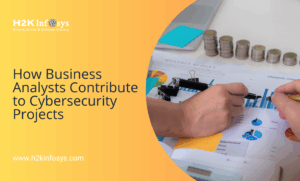A business analyst plays a critical role in ensuring the success of a project. But what makes the business analyst effective? The success of a business analyst is ensured by not just producing the business deliverables on due time, but effectively engaging and communicating with stakeholders is key to effective project implementation. As a beginner in business analysis, it is important that you understand how to effectively work with stakeholders; and registering for an online BA training is a good place to learn. Let’s see some tips on how you can build work effectively with stakeholders.
1.Engage the stakeholders as early as possible
One basic truth in life is that everyone wants to be heard and valued. Everyone wants to be understood and this includes stakeholders. Therefore, as a business analyst, you must involve them in the early stages of your project after you have carefully identified them. You should let them know the ones who are vital for influencing change, what level of involvement they have, and how much dialogue will take place as work progresses. By doing this, you can be assured of forming a collaborative community of stakeholders that fosters accountability, ownership, and transparency.
2.Create a sense of urgency
To effectively work with stakeholders as a business analyst, it is advisable that you create a sense of urgency around the activities. A good way to achieve this is to induce time boxing activities. This will make the stakeholders more focused and objective. As humans, it is said that the more you think about a task, the more complicated you make the task and the less likely you are to prioritize it on your to-do list. Therefore, creating a sense of urgency will result in highly structured and focused engagements from the stakeholders.
3.Precision and Organization
Many business analysts are used to the idea of getting numerous calendar invitations daily. The truth is that there is nothing more frustrating than not paying proper attention to your dealings with your stakeholders regardless of how valuable your agenda might be. Stakeholders want to know the where what and why of every activity, and they want to know as quickly as possible. So when engaging with them, be clear, precise and organized in your agenda, and get to the bottom line concisely.
4.Be a good facilitator
If you see a business analyst work effectively with stakeholders for a project, then be sure that the business analyst is a good facilitator. When engaging with stakeholders, you should be able to provide enough knowledge on the topic propelling a collaborative session with them. With this, the stakeholders feel empowered to collectively navigate findings, results and action points. Stakeholders are more likely to own and drive action points when they know they are full participants in the project, and this means they are involved in both the discussions and decision-making process. There are online business analysis certification courses where you can learn how to facilitate.
5.Consistency in approach
This enhances stakeholder engagement when you are running multiple sessions. It is important that you are consistent so that your stakeholders can familiarize themselves with your approach and your questions. This will also enable them to think proactively and be more productive in your elicitation sessions. In case you want to begin a new session, it is vital that you properly lay out how the session will work and what is expected of the stakeholders so they will not be caught surprised in the long run.
6.Hammer on the benefits
This might sound funny, but you will likely lose your stakeholder’s attention if you don’t do it. As a good business analyst, take as many opportunities available to try and reinforce why they are part of the business analysis process. The truth is Business analysts are recognized as agents of change and some stakeholders might feel threatened by their presence. So at the early stages of stakeholders’ engagement, it is vital that you clearly explain why the project is being done, how it will impact the organization, and how their involvement is beneficial to both themselves and the organization.
Hammering on the benefits at the early stages of stakeholder engagement will also clarify any doubts or concerns, adopt the process and focus on getting a better overall outcome.
7.Manage expectations
To work with stakeholders effectively, you should be able to manage expectations. This means that when you say that you will do something at a particular time, you do it. And if it will not be possible, communicate it with them before that time. This will make the stakeholders remember you for the good quality work and it will also build trust between both parties.
Conclusion
A successful business analyst needs to properly understand their stakeholders, and educate them on the importance of the business analysis process and how it will profit them. Working effectively with stakeholders as a business analyst is critical for success in any organization. One important rule to know is that stakeholders care about their responsibilities and want to give their best. There are business analysis training programs that educate aspiring business analysts on how to effectively work with stakeholders.






























One Response